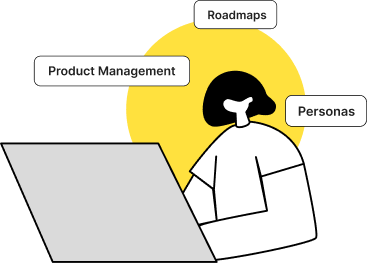Businesses create products to address specific issues faced by distinct demographics in particular spheres of life. In-depth knowledge of these groups’ motivations, difficulties, aspirations, and self-perceptions are important. It is also necessary to know what messages these groups find convincing. Organizations that create and deliver products without knowing who they’re for and what issues they’re solving are more likely to fail than succeed in their endeavors. It’s like building VHS in 2022—ah, hello, Netflix and Prime Video would like to have a word with you. That’s why successful product management applies a variety of techniques, like Persona, to keep development teams focused on the consumer.
What exactly is a persona?

A Personas is a profile of a product’s typical consumer in product management. It requires a deep grasp of those groups, including what drives them, the obstacles they face, the objectives they have, how they see themselves, the sorts of messaging they find convincing, and so on.
What influence does persona research have on a team’s workflow?
Personas encourage teams to talk about how a user might engage with a suggested concept. They internalize the user by adapting their thinking and developing solutions based on what is best for the user and their specific scenario. Personas provide a well-documented, precise emphasis on who the product is for, preventing consumers’ demands from being adjusted to fit an idea or concept. Personas may be used by product management to assess and prioritize features or by a designer to decide the overall visual style of a product.
Here is an example of using personas to prioritize features:

Here is an example of personas for design purposes:

When everyone on a team has a common knowledge of consumers, there are fewer arguments regarding product development since there is more agreement on what is best for users.
So, without further ado, let us dive into the fabric of Personas.
Let There Be Empathy –

| “Empathy is the ultimate form of customer insights.” – Don Peppers |
In product management, empathy is best defined as the capacity to put oneself in the shoes of your consumer. “Customer first” or “customer-oriented” are phrases that are often employed, but what do they imply in practice? Simply put, the concept entails letting go of one’s demands and experiences, as well as the idea that every consumer has the same requirements.
For example, on the Canva design App, there are four types of users:
- in-house marketer,
- designer,
- small company owner
- creative agency.
Canva Pro emphasizes distinct features for each user persona:
| Canva Consumers | Message to Focus | Features to Focus | Where to Find |
| In House Marketer |
|
| |
| The Designer |
|
| |
| Small Business Owners |
|
|
|
| The Agency |
|
|
|
Everyone is unique, and so the products should reflect these unique needs. This necessitates continual study into target user categories, and Personas is an efficient method to gather and distribute this information. This data informs your product strategy and keeps the whole product team focused on providing an exceptional customer experience.
Characteristics of what a Personas are not:
- Personas are not a fictitious representation of how a target user thinks. Each detail of a persona’s description should be based on facts obtained through observation and research;
- Personas are created based on actual user behaviors rather than different user roles;
- A Personas are concerned with the present situation, i.e., how people engage with a product, and not with the future;
- Personas are focused on the behaviors and objectives associated with a product’s specialized domain.

Types of Personas –
- Buyer Personas – In a business-to-business (B2B) setting, the buyer Personas is the central character. This person will often have a voice in the purchasing cycle. A buyer Personas may be used to reach a few influential and senior executives inside a company who are unlikely to utilize the real product. Regardless of the user Persona’s needs, challenges, aims, and anxieties, buyers will have distinct requirements, difficulties, objectives, and fears.
- Who uses it – Sales teams use it to understand the buyer’s experience and pain points, as well as how to relieve them.
- Information Gathered –

2. Marketing Personas – Marketing Personas are centered on the customer’s objectives, requirements, and level of interest in your product. They include purchasing preferences, media consumption patterns, and the circumstances surrounding purchase decisions. They are useful for identifying market potential, message, and the product pitch’s main goals. At the most fundamental level, it enables you to tailor or target your marketing to certain parts of your audience. As a result, this Personas provides insight into how to make services and marketing messages more relevant and effective. Additionally, it enables you to map out and generate highly focused content, and that’s why it is highly suggested to design a Personas when developing your product’s communication strategy.
- Who uses it – Marketers use it to profile the stories, wants, and pains of the target audience, as well as explain the issue to them.
- Information Gathered –

3. User Personas – User Personas are fictionalized versions of real people that represent a business’s primary client base. A User Personas is designed to provide a trustworthy and accurate representation of how a company could anticipate a group of individuals engaging with a product, service, or campaign. This aids in the development of product strategy and accompanies designers throughout usability testing sessions. From a user-centered perspective, thorough knowledge of user behavior and demands defines who a product is designed for and what is required or superfluous for them. In this instance, an important difference between user and buyer Personas is that the user Personas will represent the products end consumers.
- Who uses it – Product managers utilize it to make educated judgments about who the customers are, what they need, and how their product may provide a solution to these problems.
- Information Gathered –

Post Credits –

Negative Personas: A negative Personas is a depiction of the kind of consumer you do not want. A group of behaviors, demographic characteristics, and real-world events exclude them from your pool of happy, paying clients. This might include experts who are too advanced for your product or service, students who are consuming your material only for research/knowledge purposes, or prospective consumers who are just too costly to acquire. Occasionally, negative personas are referred to as exclusionary personas, although the term refers to the same idea-profiling the individuals to whom you are not selling.
Advantage –
- Keeping acquisition costs low by interacting with those who want to listen. Identifying the incorrect consumers might assist you in locating the correct ones.
- By removing dead-end prospects, you can save your sales team time and energy and ensure that they are focusing their efforts and resources in the most productive areas.
- Increased clarity on the traits of your desired Personas.
- They may assist you in fine-tuning your marketing and communication efforts.

